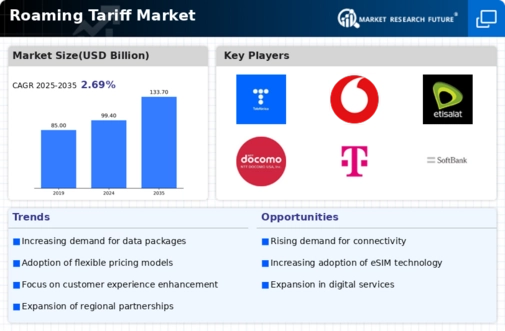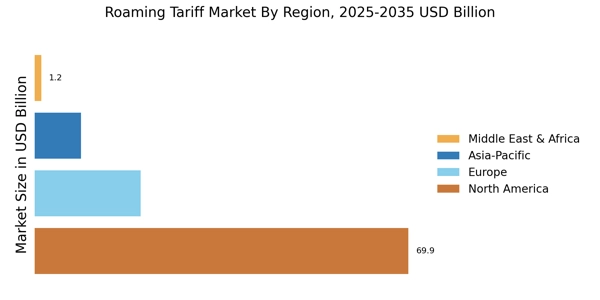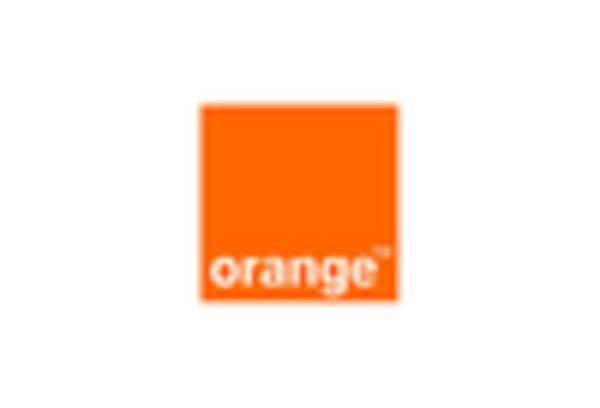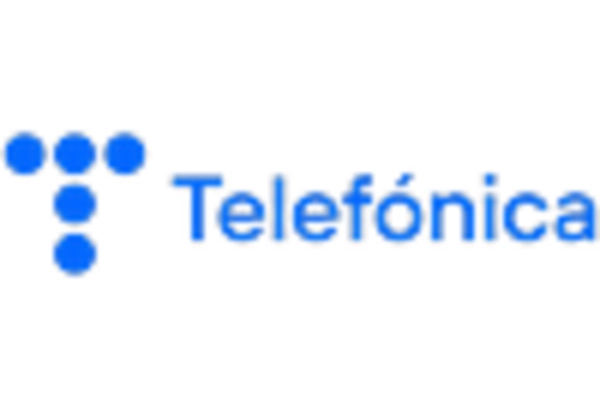Consumer Demand for Transparent Pricing
In the Roaming Tariff Market, there is a growing consumer demand for transparent pricing structures. Travelers increasingly seek clarity regarding roaming charges, which has prompted operators to revise their pricing models. According to recent surveys, approximately 70% of consumers express frustration over hidden fees associated with international roaming. This demand for transparency is leading to the introduction of simplified tariff plans that clearly outline costs, thereby enhancing customer satisfaction. As operators respond to this trend, they may adopt more straightforward pricing strategies, which could potentially reshape the competitive landscape of the Roaming Tariff Market. This shift not only benefits consumers but also encourages operators to innovate in their service offerings.
Regulatory Changes and Compliance Requirements
The Roaming Tariff Market is significantly influenced by regulatory changes and compliance requirements imposed by governmental bodies. Recent regulations aimed at protecting consumers have led to the implementation of caps on roaming charges, compelling operators to adjust their pricing strategies. For example, regulations in various regions have mandated that operators provide fair and reasonable tariffs for roaming services, which has resulted in a more competitive market environment. Compliance with these regulations is essential for operators to avoid penalties and maintain customer trust. As such, the Roaming Tariff Market is likely to see continued evolution in pricing structures as operators navigate these regulatory landscapes, ensuring they meet both legal obligations and consumer expectations.
Increased International Travel and Connectivity
The Roaming Tariff Market is poised for growth due to the increase in international travel and connectivity. As more individuals travel abroad for business and leisure, the demand for reliable roaming services is escalating. Recent statistics suggest that international travel is projected to rise by 5% annually, leading to a corresponding increase in the need for effective roaming solutions. This trend is prompting operators to enhance their roaming packages, offering more attractive tariffs and services to cater to the growing traveler demographic. Additionally, the rise of remote work has further blurred the lines between domestic and international travel, increasing the necessity for flexible roaming options. Consequently, the Roaming Tariff Market is likely to adapt to these evolving consumer needs, fostering innovation and competitive pricing.
Rise of Mobile Virtual Network Operators (MVNOs)
The emergence of Mobile Virtual Network Operators (MVNOs) is reshaping the Roaming Tariff Market by introducing alternative pricing models and increased competition. MVNOs often provide specialized services tailored to niche markets, including travelers seeking affordable roaming options. By leveraging existing network infrastructure, these operators can offer competitive tariffs that challenge traditional mobile network operators. Recent data indicates that MVNOs have captured a significant share of the market, particularly among budget-conscious consumers. This trend is likely to continue, as MVNOs innovate their service offerings and create partnerships with international carriers, further diversifying the Roaming Tariff Market. The presence of MVNOs may compel traditional operators to reevaluate their pricing strategies to retain market share.
Technological Advancements in Telecommunications
The Roaming Tariff Market is experiencing a notable transformation due to rapid technological advancements in telecommunications. Innovations such as 5G networks and enhanced satellite communication systems are facilitating seamless connectivity for travelers. As these technologies become more widespread, they are likely to influence roaming tariffs by enabling operators to offer more competitive pricing structures. For instance, the introduction of eSIM technology allows users to switch networks without changing physical SIM cards, potentially leading to more flexible roaming options. Furthermore, the integration of artificial intelligence in network management may optimize resource allocation, thereby reducing operational costs. This could translate into lower roaming charges for consumers, fostering a more dynamic and competitive Roaming Tariff Market.


















Leave a Comment